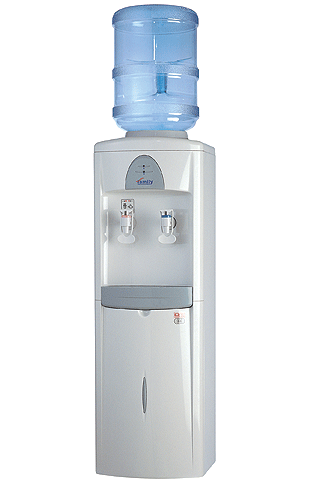
THE PRODUCT:
Water coolers (or water dispensers) are commonly used in both homes and offices to store and dispense drinking water. Water coolers include “hot and cold” units, which dispense both hot and cold water, and “cold only” units, which dispense cold water only.
THE STANDARD:
There are currently no national efficiency standards for water coolers. Seven states (California, Connecticut, Maryland, New Hampshire, Oregon, Rhode Island, and Washington) and the District of Columbia adopted standards for "hot and cold" dispensers in the mid-2000s. The state standards are equivalent to the ENERGY STAR Version 1.3 specification for water dispensers, which specified a maximum standby energy use of 1.2 kWh per day. The standby energy use (or “on mode with no water draw”) refers to the energy consumed when the unit is on but no water is being drawn. The ENERGY STAR specification also contained a maximum standby energy use limit for “cold only” units of 0.16 kWh/day.
A new ENERGY STAR specification which took effect in 2014 set the maximum standby energy use to 0.87 kWh/day for “hot and cold” storage units and 0.18 kWh/day for on demand hot and cold units. Colorado, the District of Columbia, Massachusetts, Nevada, Oregon, Rhode Island, Vermont, and Washington adopted standards equivalent to Version 2.0.
KEY FACTS:
"Hot and cold" water coolers tend to use much more energy than "cold only" water coolers because they must maintain water tanks at two temperatures in a small space. According to EPA, ENERGY STAR certified water coolers use about 30% less energy than conventional models. The energy use of water coolers can be reduced by improving the separation of hot and cold water, adding more insulation between the tanks, and improving the chilling mechanisms. ASAP estimates that about 58% of all water cooler models on the U.S. market meet the standards.

